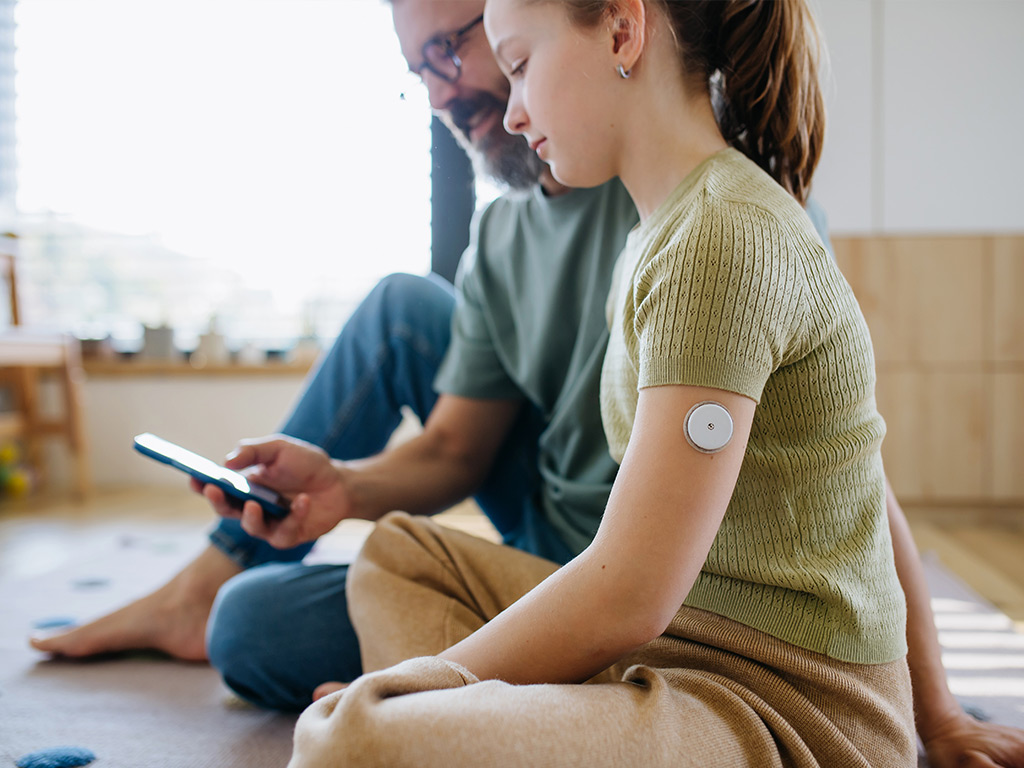People with diabetes are 25 times more likely to go blind compared to those without diabetes. So, it’s important to keep track of your eye health through annual diabetic eye exams.
Your annual eye exam will look for signs of these five conditions, all of which can be largely prevented or minimized by maintaining healthy blood glucose (blood sugar) levels and consistently maintaining an A1C of less than 7 percent:
- Retinopathy: Leakage, bleeding, and abnormal growth in the blood vessels of your eye’s retina that can cause blindness
- Macular edema: Swelling and fluid build-up in the macula of your eye, the central part of the retina, often coincides with retinopathy and can cause severe vision loss.
- Cataracts: Cloudiness in the lens of your eye that can cause vision loss
- Glaucoma: Increased fluid pressure in your eyes that can damage the optic nerve, resulting in blindness if left untreated
- Dry eye: People with diabetes are twice as likely to develop dry eye, which typically causes blurred vision that improves with blinking, excessive watering to compensate for the dryness, and severe stinging and burning of your eyes. Elevated blood glucose levels increase the risk of infection in patients with dry eye disease, which can result from a number of causes, including high blood glucose and a number of common prescription medicines.
If you experience the following symptoms schedule an exam with your eye doctor right away.
- Sudden difficulty reading or focusing on things close-up
- Sudden blurriness or double vision
- Pressure or pain in your eyes
- Presence of flashing lights, dark spots, or missing pieces in your vision
- Sudden appearance of floaters (moving spots or lines), especially when these are numerous
- Appearance of red streaks in your vision
- Sudden worsening of your night vision
What does my diabetes eye exam include?
Your Annual Diabetes Eye Exam May Include These Four Tests:
- Visual acuity testing
- Using an eye chart to test the sharpness of your vision and whether you need glasses/contacts
- Tonometry
- Measures the pressure in your eye. High pressure could mean you’re at risk for glaucoma, of which there are several types
- Retinal imaging
- Use of an imaging device that allows the eye doctor to detect very subtle changes to the health of your eyes
- Dilated eye exam
- After applying eye drops that enlarge your pupils, your eye doctor will be able to look into the back of your eye to detect any swelling of the retina, leaking blood vessels, nerve damage, cataracts, and other eye diseases that are more common in people with diabetes. This is the most important test for people with diabetes.
How Often do I Need an Eye Exam?
For most people with diabetes, there is a clear relationship between blood glucose (blood sugar) control—including A1C levels and glucose time in range—and eye health. The more your blood glucose is in a safe range over time, you are less likely to develop any diabetes-related eye conditions.
- Type 1 diabetes
- You need to have a dilated eye exam within five years of being diagnosed and every year after that. Your first exam should include a dilated eye exam. Depending on the results, your doctor may approve waiting one to two years before you need another. If you are diagnosed with eye disease, the eye doctor may recommend seeing you more frequently.
- Type 2 diabetes
- You need to have a dilated exam soon after your diabetes diagnosis. Like many people living with type 2 diabetes, you could have been living with the disease for several years before your diagnosis, which means your eyes were at risk for damage without you or your physician even knowing it. Your first exam should include a dilated eye exam. Depending on the results, your doctor may approve waiting one to two years before you need another. If you are diagnosed with eye disease, your eye doctor may recommend seeing you more frequently.
- Pregnancy with diabetes
- If you are planning to get pregnant, have a complete eye exam prior to pregnancy. Once you learn you are pregnant, you’ll want to have your eyes examined within the first trimester of your pregnancy, and again in the last trimester of your pregnancy to be sure that the increased stress from pregnancy hasn’t affected your eye health. Pregnancy can increase the pressure on blood vessels throughout your eyes, increasing your risk of diabetes-related eye conditions, especially if you had signs of eye damage prior to getting pregnant.
Looking for a provider that can help manage your diabetes? Visit selecthealth.org/find-care. Select Health members call also our Member Advocates team at 800-515-2220 (TTY: 711).
The content included in these blogs is for your information and is not a substitute for professional medical advice. It should not be used to diagnose or treat a health problem or disease. Please consult your doctor if you have any questions or concerns.
Related Articles



